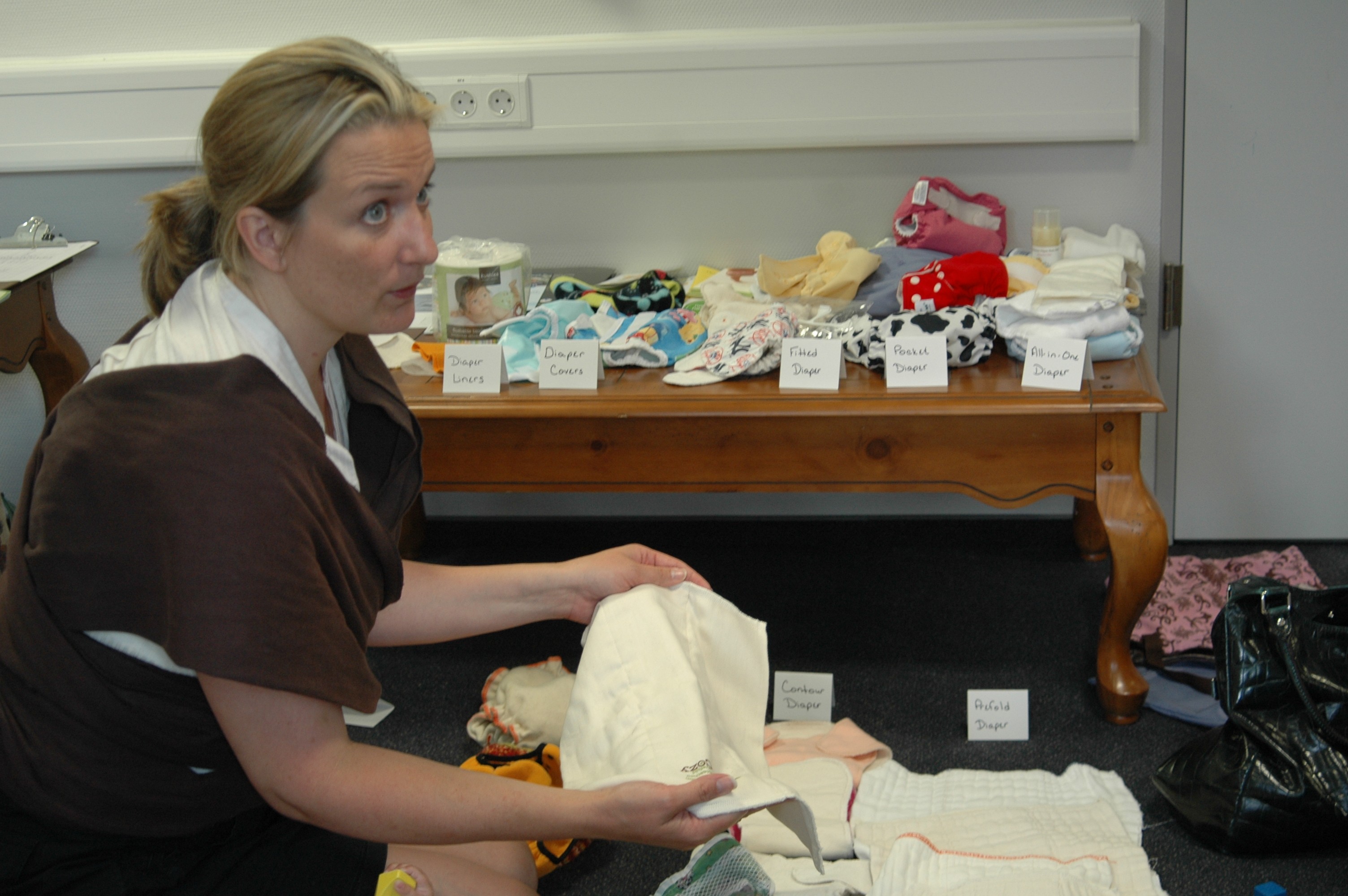
HEIDELBERG, Germany -- "What goes around comes around" is certainly true to some parents in the Heidelberg community who learned that old-school cloth diapers have been revived and are an economical and environmentally friendly alternative to disposable diapers.
To inform parents and those expecting children about the seemingly daunting cloth option, several mothers joined forces to hold diaper seminars July 15 and 17 on Patrick Henry Village in Heidelberg.
A colorful display of modern cloth diapers boasting various patterns, including animal prints and sports team logos, showed parents that the cloth option doesn't have to involve pins and toilet dunking. Elastic, Velcro and snaps have made the modern varieties of cloth as easy to put on and remove as disposable diapers.
In addition to the ease of use, the parents discovered that using cloth can save them thousands of dollars and help them avoid adding an average of 6,000-8,000 disposable diapers per child to the garbage. Also, they discussed how the chemicals in disposables can cause rashes on sensitive baby skin, where cloth diapers offer a chemical-free alternative.
Angela Torres, birth doula, lactation counselor and budding childbirth educator, began using cloth diapers nine years ago when they were not yet in vogue. Having used them on her three children, Torres was able to provide attendees with detailed information and tips gained from experience regarding the different types of diapers, how to take care of them and more.
"Like any other group in the military, there are families who have needs, and some of these needs are more specialized than others," Torres said. "I think this is important not just for our families, but for our environment to be able to sit and discuss cloth diapering together since someone who might want to make a switch can be too overwhelmed to do it alone because there's so much out there."
The modern cloth diapers discussed during the seminar are much easier to use than the pin-up diapers from the past. With pocket-style, all-in-one and fitted diapers, among others, parents may change their child's diapers with ease. Super soaker materials within the diaper liners, including bamboo, hemp and cotton, also provide high levels of absorption and comfort that prevent "blowouts," according to the cloth diapering mothers at the seminar.
While a seemingly expensive investment, cloth diapers save money in the long run. Torres said a child only needs about 20 cloth diapers when they are laundered every other day. On average, a brand-name all-in-one cloth diaper that mimics the shape of a disposable diaper and uses snaps or Velcro for closure can cost about $20 each, while those made by less popular brands average less than half that price. A dozen old-style prefold cloth diapers costs about $25.
In addition to the cost savings, cloth diapering helps conserve resources as well, which is the reason Samantha Rogers, pollution prevention specialist for the U.S. Army Garrison Baden-Wuerttemberg's Directorate of Public Works, attended one of the diaper seminars.
"Disposable diapers impact the environment, just like other manufactured products, through their use of non-renewable, i.e. petroleum, and renewable resources, i.e. trees or cotton," Rogers said. "In the long run, the use of fossil fuels leads to a depletion of that resource and also increases air emissions."
Nearly 49 million diapers are thrown away each day in the United States alone and each one takes several hundred years to decompose, according to www.realdiaperassociation.org. The fact that cloth diapers can be reused and even sold once the child becomes potty-trained prevents more diapers from ending up in landfills.
"If you want to reduce solid waste, go with cloth," Rogers said. "Using an efficient washer and line-drying will reduce their energy impact. Disposables reduce consumer-end water consumption. You make the difference; it's up to you to weigh all of the impacts when deciding."
Marlo Dowdy, an expecting mother, knew little about the alternative before coming to the seminar.
"I came so I can learn more about cloth diapers and the options out there," Dowdy said. "This is a great opportunity for new moms to learn a lot about the options and hear from others' experiences, and hopefully more people will take advantage of this resource in the future."
"I like how they don't have chemicals," Dowdy added, "and that there are cloth wipes and diapers that don't have to be thrown away every day while also saving costs. I'm excited to see how it all works."
Whether hoping to save money, protect the environment, prevent rashes on a baby's skin or to simply have an endless supply of decorative diapers, these cloth diapering mamas recommend you consider cloth.
"If you're interested, just try it," Torres said. "It's not as scary as it seems. They've made it much easier to make the switch than it used to be."
(Editor's Note: Jonathan Ochart is a summer hire for the USAG Baden-Wuerttemberg Public Affairs Office)

Social Sharing